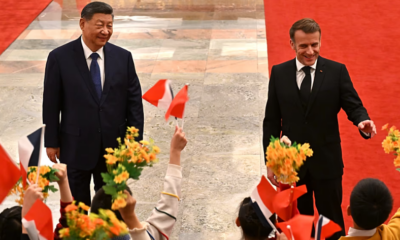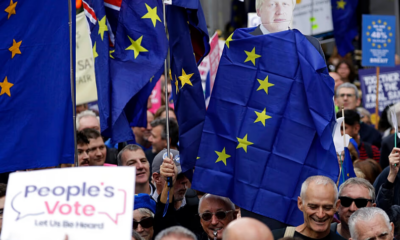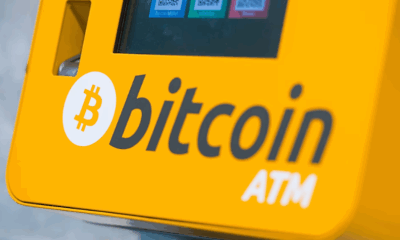Business
M&A Activity Shows Resilience Amid Global Trade Tensions and Economic Uncertainty

Global mergers and acquisitions (M&A) activity is demonstrating surprising resilience despite a challenging backdrop of geopolitical unrest, trade tensions, and lingering economic uncertainty. According to analysts and corporate advisers, seasoned dealmakers are continuing to pursue strategic transactions, even as risks remain elevated.
Pitchbook’s latest M&A report revealed that global dealmaking in the first half of 2025 reached $2 trillion across 24,793 transactions — year-on-year increases of 13.6% in value and 16.2% in volume. “Despite persistent macroeconomic headwinds, including recession risks, geopolitical instability, and renewed trade friction, M&A remained remarkably strong,” said Garrett Hinds, senior private equity analyst at Pitchbook.
Europe is on track for its best M&A year in over a decade, if current momentum continues. This follows a difficult 2023, where rising interest rates and inflation led to valuation mismatches between buyers and sellers. “When expectations from buyers and sellers are misaligned, deals often fall apart or require complex mechanisms like earn-outs to bridge the valuation gap,” said Lorenzo Corte, global co-head of transactions at Skadden.
Easing interest rates and more stable inflation conditions have helped narrow these valuation gaps. Nigel Wellings, co-head of corporate for Europe at Clifford Chance, noted that companies are finally regaining the ability to model costs and risks. “There’s now a better sense of where interest rates are heading, which is vital for deal pricing and structuring,” he said.
Strategic shifts driven by emerging technologies and climate goals are also prompting firms to restructure. Many companies are shedding non-core units or acquiring capabilities in areas like artificial intelligence and sustainability to future-proof their operations. “CEOs increasingly see M&A as a tool to reposition their business for the next decade,” said Erik Hummitzsch, EMEA deals leader at PwC Germany.
Geopolitical tensions and shifting trade policies are also shaping deal strategies. Firms are consolidating operations to limit exposure in risky markets while increasing presence in stable or growing regions. Cost pressures, particularly from U.S. tariffs, are pushing industries like automotive and chemicals toward consolidation. Meanwhile, increased defence spending in Europe is driving activity in aerospace and related sectors.
Europe’s cautious regulatory stance on mergers is being re-evaluated. The Draghi report, published in late 2024, has called for more encouragement of consolidation to bolster EU competitiveness. “There’s a growing recognition that scale isn’t inherently bad,” Wellings said, adding that Europe needs to create industrial champions, especially in globally competitive sectors like finance and defence.
Looking ahead, analysts say the M&A outlook hinges on global trade developments, particularly U.S. tariff policy under President Trump, and broader macroeconomic trends. While dealmaking remains below peak levels, growing appetite for strategic restructuring, easing interest rates, and better market clarity suggest that M&A activity is likely to remain steady in the months ahead.
Business
US Allows Nvidia to Sell H200 Chips to Approved Chinese Customers With 25% Surcharge
Business
Gold Looks to 2026 After a Record-Breaking Year Marked by Geopolitical Tension and Strong Central Bank Demand
Business
Goldman Sachs Warns Europe Faces Economic Strain as China’s Export Push Intensifies

China’s strengthening export momentum is emerging as a significant threat to Europe’s economic outlook, with Goldman Sachs cautioning that major EU economies could face notable GDP losses as Beijing doubles down on an export-led recovery strategy. The investment bank has cut its eurozone growth forecasts, warning that Europe is increasingly exposed to rising global trade competition at a time of limited policy flexibility.
Giovanni Pierdomenico, an economist at Goldman Sachs, said the euro area is “particularly exposed” to the impact of increased Chinese goods supply, which risks widening the region’s growing trade deficit with China and undermining its already weakened competitive position. The bank estimates that stronger Chinese export competition will reduce eurozone GDP by about 0.5% by the end of 2029.
Germany is projected to face the heaviest hit, with real GDP expected to be 0.9% lower over the next four years due to pressure from Chinese exports. Italy is forecast to see a 0.6% impact, while France and Spain are each expected to register declines of around 0.4%.
Goldman analysts point to a sharp shift in global market dynamics: in the past five years, eurozone exporters have lost as much as four percentage points of market share to Chinese firms across major global markets. The bank estimates that for every one-dollar increase in Chinese exports, European exports typically fall between twenty and thirty cents, illustrating the scale of substitution taking place. This trend, analysts say, is steadily eroding Europe’s competitive edge.
European policymakers have announced a series of measures aimed at strengthening strategic resilience, including the Critical Raw Materials Act and the AI Continent Action Plan. But Goldman Sachs remains doubtful that these initiatives will be enough to counter China’s export dominance. Analyst Filippo Taddei notes that the EU’s response is constrained by structural vulnerabilities — particularly its heavy reliance on China for key components and raw materials.
Goldman warns that while selective action against certain Chinese products is possible, broader restrictions could disrupt supply chains central to Europe’s industrial activity. At the same time, the bank highlights that many EU programmes intended to shore up competitiveness remain underfunded relative to their ambitions.
Defence is the only sector where Europe has committed substantial financial resources, with the Readiness 2030 programme backed by €150 billion in loans under the Security Action for Europe scheme. Even this effort, however, relies on Chinese supplies of rare earth elements essential for advanced military systems.
The bank concludes that without a more unified and assertive industrial strategy, Europe risks losing further ground in global markets it once dominated. Policymakers now face difficult decisions over how to reinforce Europe’s industrial base while managing its dependence on Chinese inputs — and how long the region can rely on fiscal support and consumer strength to cushion its economy against mounting external pressures.
-

 Entertainment1 year ago
Entertainment1 year agoMeta Acquires Tilda Swinton VR Doc ‘Impulse: Playing With Reality’
-

 Business2 years ago
Business2 years agoSaudi Arabia’s Model for Sustainable Aviation Practices
-

 Business2 years ago
Business2 years agoRecent Developments in Small Business Taxes
-

 Home Improvement1 year ago
Home Improvement1 year agoEffective Drain Cleaning: A Key to a Healthy Plumbing System
-

 Politics2 years ago
Politics2 years agoWho was Ebrahim Raisi and his status in Iranian Politics?
-

 Business1 year ago
Business1 year agoCarrectly: Revolutionizing Car Care in Chicago
-

 Sports1 year ago
Sports1 year agoKeely Hodgkinson Wins Britain’s First Athletics Gold at Paris Olympics in 800m
-

 Business1 year ago
Business1 year agoSaudi Arabia: Foreign Direct Investment Rises by 5.6% in Q1





























